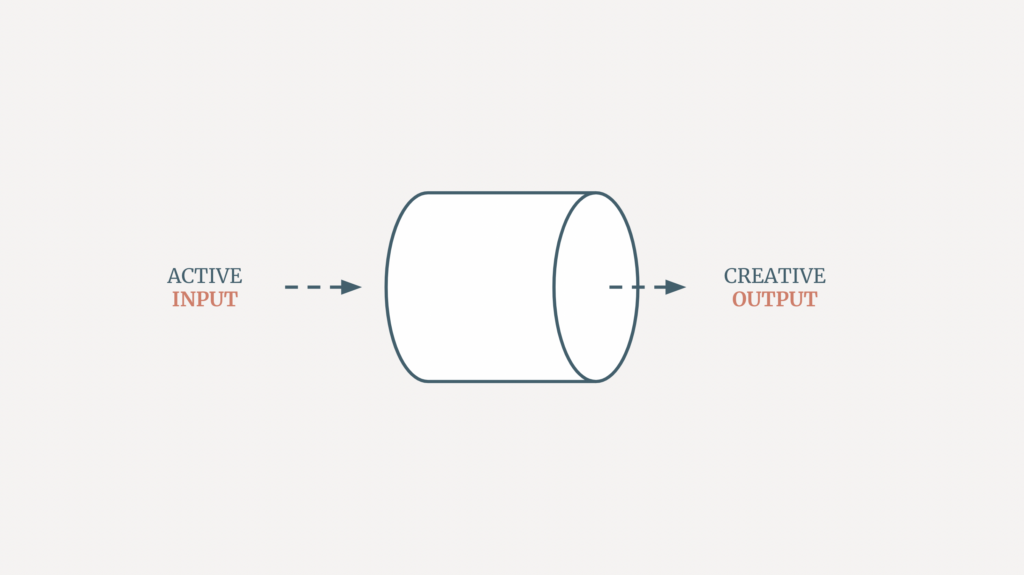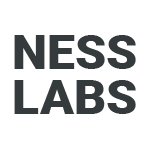When was the last time you had an ‘aha’ moment? If you’re like most people in today’s era of noisy information, it may have been a while. We have access to limitless data, and yet this rarely leads to brilliant creative insights. In fact, this constant assault on our attention can quietly corrode our creative capacities.
When we’re perpetually overloaded, our brains never get a chance to make the unexpected connections that spark original ideas. When we mindlessly consume whatever the algorithm is feeding us, we don’t provide our minds with the creative fuel it needs to generate interesting ideas.
To get quality creative output, you need quality creative input. So, how do you balance the two?
Anti-fuel for creativity
We live in an era where the overall availability of information is not a problem anymore. Social media and endless browsing bombard us with a constant stream of new information. But our brains were not built to handle the constant novel stimuli of the digital age.
Scientists have found that excessive multi-tasking and switching between different streams of information can overtax our working memory. This makes it harder for our brains to filter out irrelevant details, engage in deep thinking, and make meaningful connections, which limits our ability to think creatively.
And we’ve become so used to constantly checking “what’s new” that our minds have become scattered, even when we don’t actively engage with that endless stream of information. In fact, the mere presence of your smartphone next to you can reduce your available cognitive capacity!
Our minds need whitespace to make the unexpected connections that fuel creativity. As the author Julia Cameron puts it: “When a creative artist is fatigued, it is often from too much inflow, not too much outflow.”
With an endless influx of information competing for our attention, our creative wells often run dry. To revive your imagination, you need to be more intentional about balancing your creative input with your creative output.
A better content diet
Balance your input and your output means aligning what you consume with your creative goals. Consider the information you consume to fuel your mind the same way you would food to fuel your body: not too much, the right ingredients, and the occasional treat.
Here are a few tips to reduce mindless consumption with a content diet:
1. Limit time on passive social media scrolling. Use website blockers to restrict aimless browsing if necessary. Checking Twitter or Instagram out of habit rarely inspires creativity. Of course memes can be fun. Just set limits on how much time you allow yourself to indulge in low-value content.
2. Subscribe to carefully curated newsletters aligned to your interests. Avoid flooding your inbox with subscriptions you don’t have time to read. Add labels so these newsletters go into a dedicated folder you set time aside to read.
3. Go offline for focused reading. Read ebooks on your Kindle without distractions. Buy physical books, magazines, and journals to disconnect from the digital bustle. Immersive long-form reading boosts creativity better than skimming content.
4. Keep inspiring materials on hand for quick creative sparks. Build your antilibrary. When you have a spare moment, pull out your inspiration from there rather than social media.
5. Select audio content with intention. Rather than passively playing radio with random talk shows intercalated with ads, be selective with what you listen to. When driving, exercising or doing chores, put on a podcast or audiobook that feeds your creativity. This includes fiction!
With more intention, you can craft a content diet that nourishes instead of numbs your imagination, and turn what you take in into a creative catalyst.
How to practice active content consumption
While being mindful of the quantity and quality of information you consume is a great first step, changing how you consume this content is even more powerful. It’s easy to passively read blog posts and watch videos. But it’s better to make it an active endeavor.

Not only active content consumption will help you become more intentional with the content you consume (it would be quite hard to write a blog post about that cat video you just watched) but science shows that it will help you remember things better and come up with better ideas later by putting your brain into focused mode.
Almost any piece of creative content can be consumed in active mode:
| Passive | Active |
| Watch a YouTube video | Make a YouTube video |
| Read a blog post | Take notes and write your own post |
| Listen to a podcast | Share podcast notes on Twitter |
Here are a few ways you can go from passive to active content consumption, from easier to harder:
- Make notes by hand or digitally. Write down key points, memorable quotes, and your own reflections. Note-making will help you identify the most valuable bits of information and synthesize concepts, and reviewing your notes later will help feed your creativity.
- Explain new concepts in your own words to others. You can simply send the link to a friend you think would be interested in the content with a couple of thoughts of your own. Summarizing what you learned and teaching it activates deeper mental processing, which is known as the generation effect. As a bonus, having to structure and communicate the ideas often yields new perspectives.
- Write your own article. Use what you consumed as inspiration for original output. Creating something new requires you to connect the dots between disparate sources, and putting your thoughts into words to share with the world can help you discover new insights. You may even receive some thought-provoking feedback that will further spark your creativity.
Also consider stepping away from your screen and doing something completely different and unrelated:
- Take a notebook and go to a park or somewhere beautiful to sit down and relax
- Try cooking a new recipe you have never tried before
- Read poetry, a novel, or something unrelated to your field
- Take a train to go visit a new town and take some photos like a tourist
- Go to a library and explore a random aisle
- Find a local meetup in an industry you know little about
In an era where we are expected to be on the receiving end of broadcast communication, designed to make it feel like it was crafted just for us, to be intentional about the content we consume is an act of freedom.
And your brain is great at making random connections given you support those processes by ensuring you have the right balance between creative input and creative output. So try to inject more intentionality in your content diet and practice active content consumption to get those creative juices flowing!
